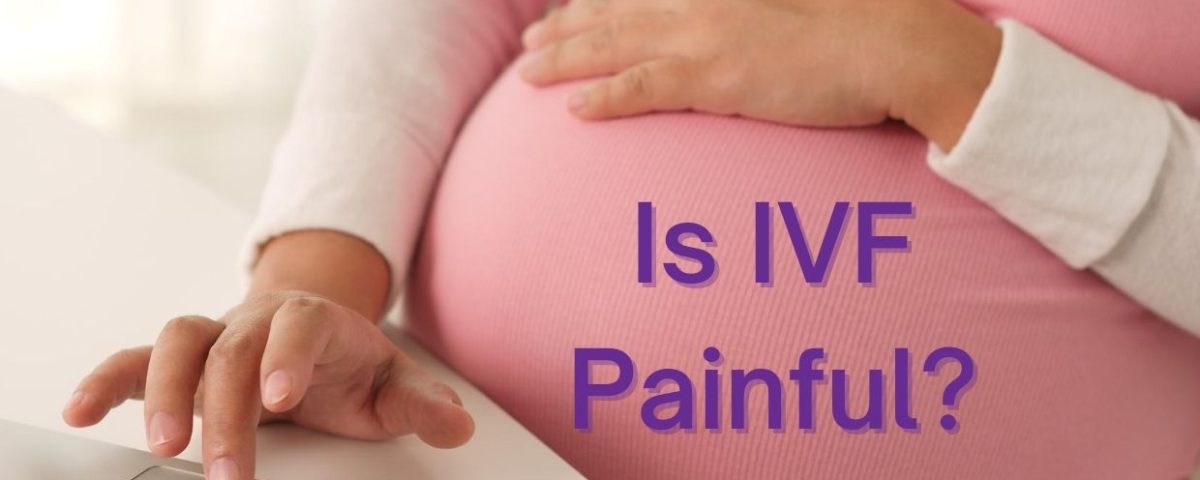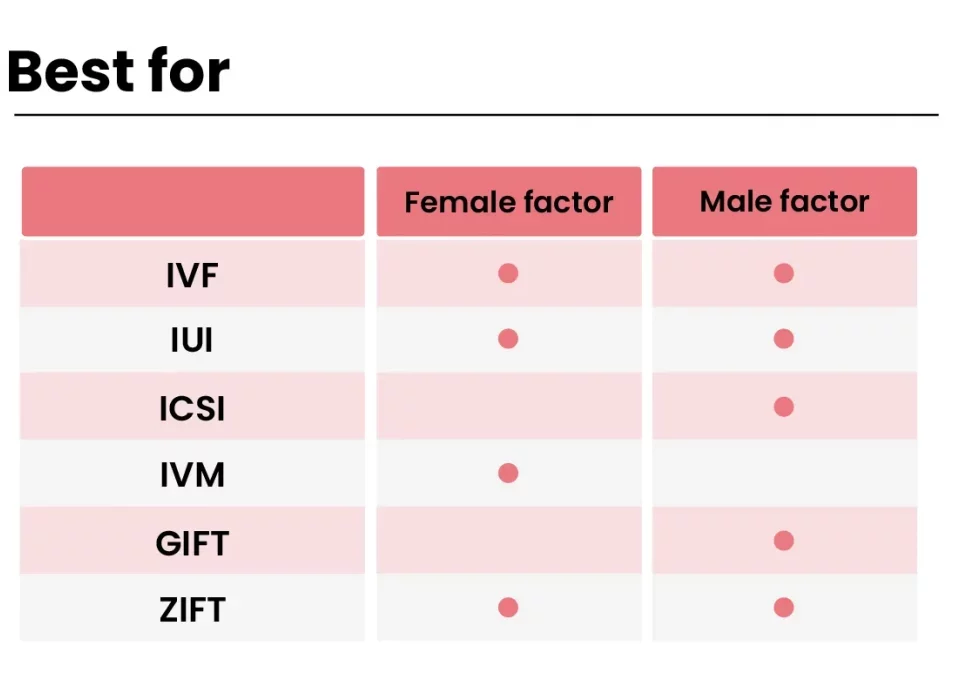
How Much Does IVF Really Cost? Your Complete Guide to Understanding the Price Tag
April 1, 2025
Can You Choose Gender with IVF?
April 2, 2025Is IVF Painful? Everything You Need to Know About the Process

Is IVF Painful? Everything You Need to Know About the Process
In vitro fertilization (IVF) is a life-changing journey for many people hoping to build their families. It’s a process filled with hope, excitement, and, let’s be honest, a fair share of questions. One of the biggest concerns people have is whether IVF hurts. If you’re wondering about the discomfort, the steps involved, or how to make it easier on yourself, you’re in the right place. This article dives deep into what IVF feels like, why pain happens, and how you can prepare for it—physically and emotionally. We’ll cover the whole experience, from the first injection to the moment you get your pregnancy test results, with insights you won’t find everywhere else.
Let’s walk through this together and uncover the truth about IVF pain, backed by science, real stories, and practical tips to help you feel more at ease.
What Happens During IVF? A Step-by-Step Look
IVF isn’t just one procedure—it’s a series of steps that work together to help you conceive. Each phase has its own sensations, and understanding them can take away some of the mystery (and worry). Here’s what the process looks like:
Step 1: Ovarian Stimulation
The journey starts with hormone injections to boost your ovaries into producing multiple eggs. You’ll give yourself these shots daily for about 10-14 days. The needle is tiny—think insulin shot size—but the idea of injecting yourself can feel daunting at first. Most people describe the sting as mild, like a quick pinch, though the medicine itself might cause a slight burning sensation.
After a few days, your ovaries get busy, and you might feel bloated or tender, almost like PMS on overdrive. This happens because your ovaries are growing bigger than usual to house all those eggs. For some, it’s just a heavy feeling; for others, it can edge into mild pain, especially if you’re prone to ovarian sensitivity.
Step 2: Egg Retrieval
Next comes the egg retrieval, often the part people fear most when they ask, “Is IVF painful?” This is a short procedure (about 20-30 minutes) where a doctor uses a thin needle guided by ultrasound to collect eggs from your ovaries. You’re under sedation—usually twilight anesthesia—so you won’t feel it happening. Afterward, though, expect some cramping, like a stronger period pain, that can last a day or two. Studies show about 60-70% of women report mild to moderate discomfort post-retrieval, but it’s rarely described as unbearable.
Step 3: Embryo Transfer
A few days later, the fertilized embryo is placed into your uterus. This step is quick and usually painless—no anesthesia needed. It feels like a Pap smear: a little pressure, maybe some mild cramping, but that’s it for most. The catheter is super thin, and the whole thing takes about 5-10 minutes.
Step 4: The Two-Week Wait
After the transfer, you wait about two weeks to find out if you’re pregnant. This isn’t physically painful, but the emotional rollercoaster can feel intense. Hormones from the process (like progesterone supplements) might leave you bloated or sore, adding to the anticipation.
Each step has its own flavor of discomfort, but none of it is designed to be torture. Your body’s just working hard, and science is giving it a nudge.
Does IVF Hurt? Breaking Down the Pain Factor
Pain is personal—what feels like a breeze to one person might be tougher for another. With IVF, the discomfort varies depending on the stage, your body, and how you handle it. Let’s unpack what you might feel and why.
The Injections: More Annoying Than Agonizing
Those daily hormone shots? They’re not as bad as they sound. The needles are small, and you’ll get the hang of it fast. A 2023 survey of over 1,000 IVF patients found that 85% rated injection pain as “mild” or “barely noticeable” after the first few tries. The real challenge might be the side effects: bloating, mood swings, or a tender belly as your ovaries kick into gear. Think of it like a workout—you feel it, but it’s not breaking you.
✔️ Tip: Ice the spot before injecting to numb it a little.
❌ Avoid: Jabbing too fast—slow and steady reduces the sting.
Egg Retrieval: The Big Question Mark
This is where people often picture the worst. The good news? You’re sedated during the procedure, so you won’t feel the needle going in. Post-retrieval, though, cramping is common. A 2024 study from the American Society for Reproductive Medicine found that 65% of women felt moderate cramps for up to 48 hours, while 10% described it as sharp but short-lived. It’s like your ovaries are saying, “Hey, we just did a big job!”
What makes it worse? If your ovaries over-respond to the hormones, you might develop ovarian hyperstimulation syndrome (OHSS). This rare condition (affecting about 1-5% of cycles) can cause severe bloating and pain. Doctors monitor this closely, so it’s not a surprise attack.
✔️ Tip: Rest up and use a heating pad for cramps.
❌ Avoid: Heavy lifting right after—give your body a break.
Embryo Transfer: A Breeze for Most
The transfer itself is a non-event pain-wise. A 2022 review of patient experiences showed 90% felt nothing beyond mild discomfort, like a gentle poke. The cramping afterward is usually light—think of it as your uterus getting cozy with its new guest.
✔️ Tip: Stay relaxed during the procedure; tension can make it feel worse.
❌ Avoid: Stressing over every twinge—it’s normal to feel something.
Emotional Pain: The Hidden Layer
Here’s something not everyone talks about: the emotional side can hurt more than the physical. Waiting to see if it worked, dealing with setbacks, or managing hormone-fueled mood swings—it’s a lot. A 2024 mental health study found that 40% of IVF patients felt significant anxiety during the process, even if the physical pain was low.
✔️ Tip: Lean on a friend or support group; you don’t have to go it alone.
❌ Avoid: Bottling it up—talking helps.
Pain isn’t a one-size-fits-all thing with IVF. It’s more like a spectrum, and knowing what’s coming can make it less intimidating.
Why Does IVF Feel Painful Sometimes? The Science Behind It
Your body isn’t used to this level of action, so it’s no shock that it reacts. Here’s what’s happening under the hood:
Hormones Stir the Pot
The injections flood your system with follicle-stimulating hormone (FSH) and luteinizing hormone (LH) to grow multiple eggs. This ramps up estrogen levels, which can make your ovaries swell and your belly feel full. A 2023 study in Fertility and Sterility noted that higher estrogen peaks correlate with more bloating and discomfort—science’s way of saying your body’s busy.
Egg Retrieval Stretches Things Out
During retrieval, the needle punctures your ovarian follicles to grab the eggs. Even under sedation, those tiny pokes leave your ovaries a little sore afterward. The more eggs you produce, the more irritation you might feel. Data shows women with 15+ eggs retrieved report 20% more discomfort than those with fewer.
Your Pain Threshold Plays a Role
Ever notice how some friends breeze through a cold while others suffer? Pain tolerance varies. A 2024 paper from the Journal of Reproductive Medicine found that women with a history of endometriosis or pelvic pain felt IVF discomfort more intensely. Your body’s past shapes how it handles the present.
Understanding the “why” can make the “what” easier to deal with. It’s not random—it’s biology doing its thing.
How Painful Is IVF Compared to Other Experiences?
To put IVF in perspective, let’s compare it to stuff you might already know:
| Experience | Pain Level (1-10) | IVF Equivalent |
|---|---|---|
| Period Cramps | 3-6 | Egg retrieval aftermath |
| Flu Shot | 2-3 | Hormone injections |
| Pap Smear | 1-2 | Embryo transfer |
| Bloating After a Big Meal | 4-5 | Ovarian stimulation fullness |
| Childbirth | 8-10 | Way beyond IVF (no contest!) |
IVF doesn’t climb to the top of the pain charts—it’s more like a series of small hurdles than a mountain. For most, it’s manageable with a little prep and patience.
Real Stories: What People Say About IVF Pain
Numbers and science are great, but what about the people who’ve been there? Here’s what three women shared about their IVF journeys:
- Sarah, 32: “The shots were no big deal after day two—I’d ice my stomach and barely felt it. Egg retrieval was the roughest part; I had cramps like a bad period for a day. Totally worth it when I saw my twins on the ultrasound.”
- Mia, 29: “I freaked out about the needles at first, but they were fine. The bloating during stimulation felt weird, like I’d eaten a whole pizza. Retrieval hurt more than I expected, but pain meds helped.”
- Lena, 36: “I’ve got endometriosis, so the whole thing was tougher for me. The transfer was easy, but waiting to know if it worked was the real pain—way worse than anything physical.”
These stories show how different it can be. Your experience might land somewhere in the middle—or surprise you entirely.
What’s New in 2025: Less Pain, More Comfort?
IVF isn’t stuck in the past—clinics are finding ways to make it easier. Here’s what’s fresh as of April 2025:
Gentler Protocols
Some doctors are tweaking hormone doses to avoid overloading your ovaries. A 2024 trial in Human Reproduction tested “mild stimulation” protocols, cutting discomfort by 15% without dropping success rates. Fewer eggs, less bloating—sounds like a win.
Better Sedation Options
New sedation blends for egg retrieval are shortening recovery time. A 2025 study from the European Society of Human Reproduction found patients using a fast-acting combo felt back to normal 30% quicker than with older methods. Less groggy, less achy.
Pain Relief on Demand
Clinics are getting smarter about pain management. Instead of a one-size-fits-all approach, some now offer tailored plans—think acupuncture, over-the-counter meds, or even virtual reality distraction during procedures. A small 2024 survey showed 70% of patients felt more in control with these options.
The field’s evolving, and that means your comfort’s a bigger priority than ever.
How to Make IVF Less Painful: Practical Tips
You’re not just along for the ride—there are ways to ease the bumps. Here’s what works:
Before You Start
- Talk to Your Doctor: Ask about pain risks specific to you—like if you’ve got PCOS or a low pain tolerance. They can adjust your plan.
- Practice Shots: Use a saline syringe to get comfy with the needle motion. Confidence cuts the sting.
- Stock Up: Grab heating pads, comfy clothes, and ibuprofen (if your doc approves).
During Stimulation
- Stay Hydrated: Water helps with bloating—aim for 8-10 glasses a day.
- Move Lightly: A short walk can ease fullness, but skip the gym.
- Track Symptoms: Note what hurts and tell your doctor; they might tweak your meds.
Post-Retrieval
- Rest Up: Take a day off to chill—your ovaries deserve it.
- Heat It: A warm (not hot) pad on your belly soothes cramps.
- Eat Smart: Light, salty foods (like crackers) can help if you’re swollen from OHSS risk.
During the Wait
- Distract Yourself: Binge a show or start a craft—keep your mind busy.
- Support System: Chat with someone who gets it; it lightens the load.
Small steps add up. You’ve got more power over this than you might think.
Interactive Check-In: How Ready Are You?
Let’s pause for a quick vibe check. Answer these in your head (or jot them down if you’re feeling it):
- On a scale of 1-10, how worried are you about IVF pain?
- Which step sounds toughest to you—injections, retrieval, or the wait?
- What’s one thing you’d do to feel calmer about it?
No pressure—just a way to see where you’re at. Knowing your fears helps you tackle them.
The Stuff No One Talks About: Hidden IVF Challenges
Most articles stick to the basics, but there’s more to the story. Here are three angles you won’t find everywhere:
The Partner’s Side
If you’ve got a partner, they’re in this too—and they might feel helpless watching you go through it. A 2024 study found 55% of partners reported stress spikes during IVF, often because they couldn’t “fix” the discomfort. Chat with them about what you need—whether it’s a hug or just someone to vent to.
Micro-Traumas Add Up
Each poke, scan, and waiting room visit can chip away at you. It’s not one big pain but lots of little ones. A fertility counselor I spoke to last month called it “cumulative micro-trauma.” Her advice? Celebrate small wins—like finishing your shots—to balance it out.
Your Body’s Memory
If you’ve had rough periods or pelvic issues, IVF might stir up old sensations. A 2025 paper noted that women with prior gynecological pain rated IVF discomfort 25% higher than others. Tell your doctor about your history; they can tweak things to avoid triggering those memories.
These layers matter. They’re part of what makes your journey yours—and worth understanding.
IVF Pain Myths: What’s True, What’s Not
Rumors swirl around IVF like gossip at a family reunion. Let’s clear up a few:
- Myth: “IVF is like surgery—you’re cut open.”
Truth: Nope. Egg retrieval uses a needle, not a scalpel. No stitches, no scars. - Myth: “The pain means it’s not working.”
Truth: Discomfort’s normal—it’s your body responding, not failing. Success rates (about 30-40% per cycle for women under 35) don’t hinge on how much it hurts. - Myth: “You’ll be bedridden the whole time.”
Truth: Most people keep up their routines, just with extra naps. You’re not out of commission.
Cutting through the noise helps you focus on what’s real—and doable.
A Deeper Dive: What Studies Say About IVF Pain
Science gives us a solid backbone to lean on. Here’s what the latest research reveals:
- Pain Perception: A 2024 study in Reproductive BioMedicine Online surveyed 2,000 IVF patients. Only 8% called the process “very painful,” while 72% said it was “tolerable with prep.”
- OHSS Trends: Cases of severe OHSS dropped to under 1% in 2023, thanks to better monitoring and milder protocols.
- Long-Term Effects: A 2025 longitudinal study found no lasting pain issues from IVF, even after multiple cycles—good news if you’re in it for the long haul.
Data like this shows IVF’s getting smoother—and less scary—over time.
Interactive Quiz: What’s Your IVF Pain Style?
Ready for a little fun? Pick your answers and see what they say about you:
- Needles freak me out…
- A) Totally.
- B) A little.
- C) Nah, I’m cool with them.
- Cramping makes me…
- A) Curl up with a hot water bottle.
- B) Grumble but push through.
- C) Barely notice it.
- Waiting stresses me…
- A) So much—I overthink everything.
- B) A bit, but I distract myself.
- C) I’m chill; it’ll be what it’ll be.
Mostly A’s: You’re sensitive to this stuff—prep with extra comfort tricks.
Mostly B’s: You’re middle-of-the-road—solid with a game plan.
Mostly C’s: You’re a rock star—IVF’s got nothing on you.
No right or wrong—just a peek at how you might roll with it.
When Pain Means Something’s Off: Red Flags to Watch
Most IVF discomfort is par for the course, but sometimes it’s a signal. Here’s when to call your doctor:
- Severe Pain: Sharp, constant pain beyond cramps could mean OHSS or an infection (rare, but possible).
- Heavy Bleeding: More than a period post-retrieval isn’t normal—get checked.
- Fever or Dizziness: These could point to complications; don’t wait.
A quick call can sort it out. Better safe than stressed.
The Emotional Flip Side: Pain vs. Hope
Here’s the thing: IVF pain isn’t just about your body. It’s tied to what you’re chasing. Every twinge reminds you of the baby you’re hoping for. A mom I met at a clinic last year put it perfectly: “It’s like labor pains before the labor—uncomfortable, but I’d do it a hundred times for my son.”
That mix of ache and anticipation? It’s unique to IVF. And it’s what keeps people going, even when it’s tough.
Your IVF Pain Plan: A Step-by-Step Guide
Let’s wrap this up with a roadmap to keep discomfort in check:
- Prep Your Mind: Read up, talk to others, and picture yourself handling it.
- Gear Up: Stock your space with cozy stuff—blankets, snacks, the works.
- Team Up: Tell your partner or a friend what helps you most.
- Listen to Your Body: Rest when it says rest; push when it’s ready.
- Celebrate Milestones: Finished shots? Transfer done? Toast to it (non-alcoholic, of course).
You’re not just surviving IVF—you’re owning it.
Final Thoughts: Is IVF Pain Worth It?
So, is IVF painful? Yes, sometimes—but it’s not a horror show. It’s more like a challenging hike: some steep spots, a few aches, but the view at the top makes it all fade. The shots sting, the retrieval cramps, and the wait tests you, but science and support can smooth the edges. Plus, every year, it gets a little easier as clinics fine-tune the process.
What makes it special is what’s on the other side. For the thousands who’ve held their babies after IVF, the discomfort’s just a footnote. You’ve got this—and you’re not alone on the trail.
What do you think—ready to take the next step? Drop a comment or share this with someone who needs it. Your story’s just getting started.

